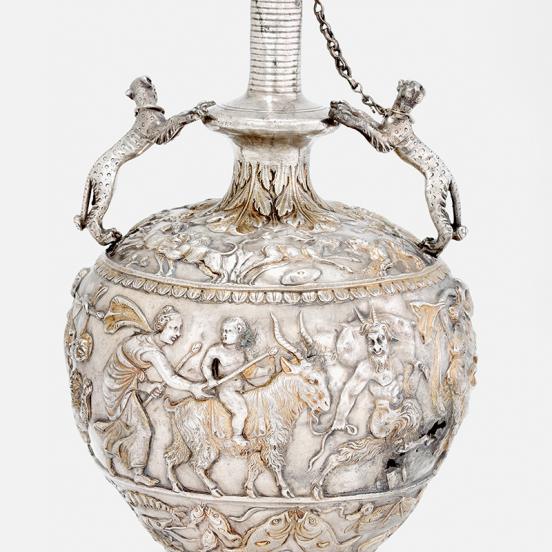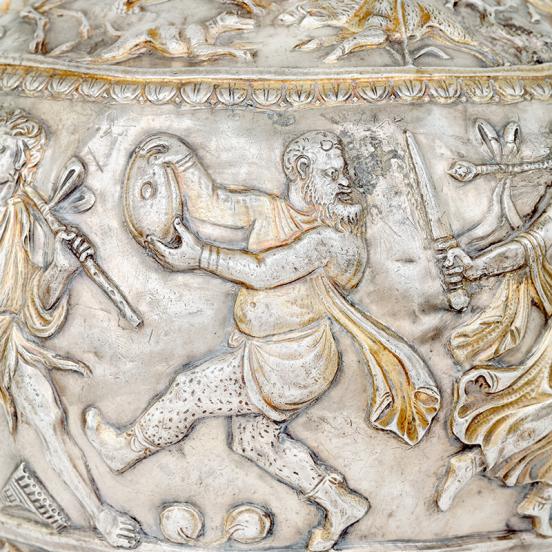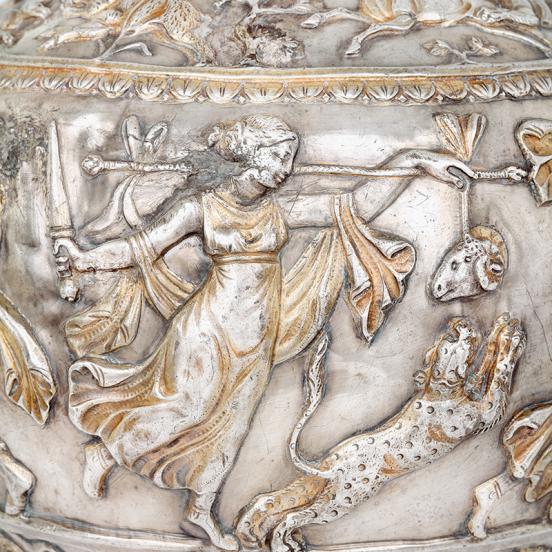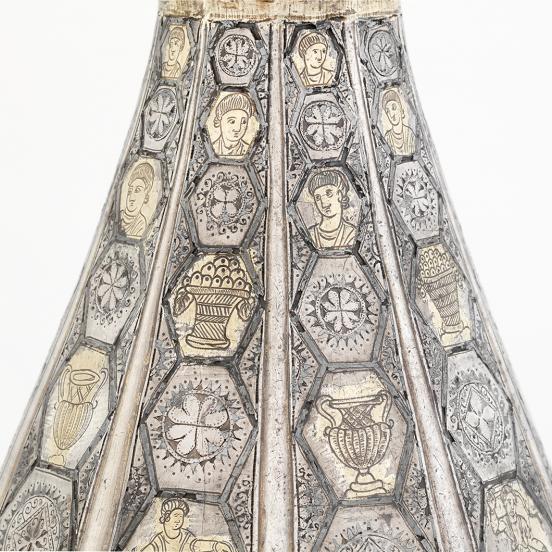The Amphora
The central figure of the decoration is Dionysus, who appears in two aspects. As a wreathed youth in the prime of life, leaning on his staff topped with a pine cone, he is pouring wine into the mouth of a panther sitting meekly at his feet. On the opposite side, he can be seen as a child with his staff in his hand riding a huge goat. He is followed by his nurse with solicitude. Between them are the well-known figures of the deity’s entourage, who may refer to episodes of the Dionysian festivals. Vine harvest may be recalled by the satyr carrying a basket full of berries. The festive sacrifice is indicated by the figure of a bacchante who is carrying the head of the animal tied to her staff, which was sacrificed to the god, while raising the sacrificial dagger in her right hand. The huge goat is led by Pan who is carrying on his shoulder a wineskin made from goat’s hide and swelling with young wine. Festive gaiety, activities such as music, dance and merry-making Dionysus is fond of are presented by bacchantes and Silenus dancing and playing the drum, cymbals, crotales and aulos. Having given themselves over to Dionysus’s spell, they all create a single rapturous merry-making company.
Under the Dionysiac procession water birds and seafish, above it lions and a leopard hunting a gazelle, an onager and a deer, as well as dogs hunting a wild boar decorate the vessel. The bottom of the amphora is embellished with an oak wreath. The neck is covered with acanthus leaves. The handles are panther figures made of solid silver; the stopper closing the mouth of the amphora was chained to one of these.
The amphora was used for serving wine, as is corroborated by its decoration. It was shaped by hammering, and the figures in relief were emphasized by gilding.


































